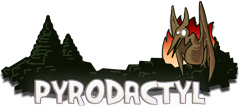Good Robot is almost done, and we are on course to finish the remaining tasks in the next couple of weeks. We’ll release the game in the first week of April, which should give us some breathing room for testing and polish.
However, there is another reason we are launching the game two months after we’re done making it – promotion. This is the part where you email every single Game Journalist / YouTube Personality / Twitch Streamer / Person with a Blog in an illegal-substance-fueled-frenzy and hope they play your game and tell others about it.

You have to cover our game! It has an exploding Frisbee that bounces off walls in it!
“Why do you need to promote your game, Arvind?” I hear my friend Manny Straw exclaim, “If your game is any good, surely you can just put it up on Steam and people who see it will tell their friends about it, and then those friends will tell their friends, and soon you’ll sell a million copies! That’s how Minecraft did it!”
“Minecraft did build its initial momentum via Games Press, Forums and YouTube though”, I answer, “but let’s say you’re right and conduct a thought experiment for a hypothetical game.”
- We make a game and put it up on Steam. Our game is so amazing that we decide not to promote it at all.
- Every one person out of ten who sees the store page buys it instantly at full price. That is a conversion rate of 10%, which is bonkers. Even if someone likes our game, they could wishlist it, wait for a sale, wait for their paycheck or many other things – but we assume they’ll buy it instantly.
- From my experience, we can expect about 50,000 people to visit the Steam page “organically” (i.e. without clicking a link via google or any other site) in the first month after launch. For our game, that means we just sold 5,000 copies!
- Let’s assume that every one person out of ten who plays our game loves it so much that they spread the word among their friends (again, this rate is extremely high). We have 500 people who posted about our game on Facebook or Twitter and link the game’s Steam store page.
- You don’t need to be a social media expert to tell that this is not going to result in many views on your store page. Let’s be incredibly optimistic and say we got 500 more people to buy our game via this method.
- We can continue the process, but each time the numbers will be smaller and smaller.
You see where this is going – relying purely on word of mouth is not a very sound strategy if you want to sell your game.

Adding a laser beam that reflects off walls should help, though.
“Okay, I get it – promoting our game is necessary”, says Manny, “but why can’t we launch our game and then promote it? Our fans can play the game as soon as we’re done with it!”
There are many reasons why that doesn’t work – one being that games media is almost always forward-looking. News about the big upcoming game or the game that just came out is usually more popular. I’m not saying that anyone is to blame – this is just how the world works. A game’s chances of getting attention are much better if the game is new. This is true for all entertainment media, except perhaps Xtreme Archaeology.
On top of that, launch week sales are usually the biggest source of income when releasing your game. That is when people have just seen a glowing review or an enthusiastic forum post and want to see what this hot new game is all about.

Dude, you must check this game out! The plasma mortar is the bomb!
Before Steam was popular, sales after the first month were usually a trickle compared to launch day. The major reason for the change are Steam Sales™, but small studios like us are still very much dependent on launch day sales. This is because when a Steam sale or daily deal happens, how much you discount your game is far less important than whether or not your game is featured on the front page of Steam. You will sell way more copies on the front page of Steam with a 33% discount than a 75% discount only on your Steam page.
The games that get Daily Deal or Summer/Winter sale slots are almost always the ones that sell the most. A majority of the slots go to the really big games (Fallout, Witcher, Call of Duty etc), and a handful are left for “the best of the rest” – the games that managed to sell well without prominent store placement. Essentially, what I’m saying is that to get to the point where we can expect Steam sales to be a windfall, we have to sell enough units at launch to qualify as a “top seller”.
Will that happen? Stay tuned for updates!
P.S. Please buy Good Robot.

There’s a shotgun for the times you want to kill robot spiders the old fashioned way.
Posted In: Games, Good Robot
